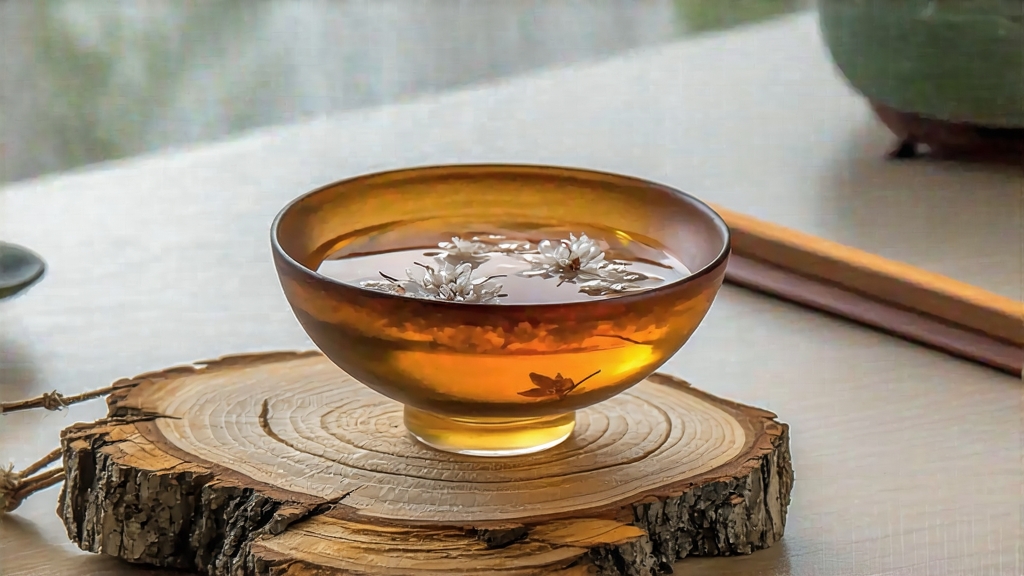
Bai Hao Yin Zhen—“Silver Needle of White Down”—is the most aristocratic member of China’s white-tea family, a style so delicate that it seems spun from moonlight rather than leaves. International drinkers often meet White Peony or compressed white cakes first, yet once they taste a properly crafted Yin Zhen they understand why Song-dynasty poets called white tea “the immortal elixir in a jade cup.” This essay invites you to travel beyond the generic label “white tea” and enter the micro-world of a cultivar that is picked only during a few spring mornings, handled only by gloved fingers, and valued by collectors like vintage champagne.
-
Historical whispers
White tea’s written record begins in the Song imperial court (960-1279), when Huizong Emperor praised “white down tea” whose buds resembled silver frost. At that time the leaves were steamed, pressed, and ground like matcha; the modern, minimally-processed form appeared only during the late 1700s in northern Fujian. Export data from 1857 show Silver Needle being shipped via Fuzhou’s treaty port to London apothecaries who marketed it as “China White” and prescribed it for fever. Because the buds are light—10,000 of them weigh barely 500 g—only the Qing court and foreign elites could afford the freight; thus Yin Zhen acquired an aura of medicinal luxury that still clings to it. -
Terroir and cultivar
Authentic Bai Hao Yin Zhen comes from two tiny counties on Fujian’s subtropical coast: Fuding and Zhenghe. The region’s red lateritic soil is rich in iron and quartz; night breezes off the East China Sea create a 10 °C diurnal swing that forces the tea bush to thicken its cell walls, concentrating amino acids and the fuzzy trichomes we admire as “white down.” By national regulation only two cultivars may be used: Fuding Da Bai (“Big White”) and Zhenghe Da Bai. The former yields plumper buds with mango-like sweetness, the latter slimmer needles with orchid fragrance and longer aftertaste. Knowing which cultivar is in your tin is like knowing whether your Burgundy is Pinot Noir from Morey-Saint-Denis or Chambolle-Musigny. -
The picking clock
Harvest begins when the spring thermometer hovers between 15 °C and 20 °C, usually from mid-March to early April. Pickers must choose buds that are “three centimeters long, unopened, and still wearing raincoat”—a local metaphor for the half-closed state that guarantees tenderness. Experienced eyes can judge in a second; a delay of one sunrise and the bud will unfurl, disqualifying it from Silver Needle grade. Because no leaf is taken, the bush yields only a handful each season; an acre garden produces at most eight kilograms of finished tea. -
Crafting without craftiness
White tea’s minimalism is often mistaken for passivity. In reality the process is a choreography of moisture, temperature, and time. After picking, the buds are spread on bamboo trays 1.5 cm thick and wheeled into a sun-drying yard. For the first two hours they lie under 70 % shade cloth to prevent sunburn; then the cloth is removed and the buds are turned every twenty minutes so that each side receives equal photonic energy. When surface moisture drops to 40 %, trays are moved indoors for 18-hour ambient withering at 26 °C and 65 % humidity. No machine, no rolling, no firing—only the slow respiration of the cells themselves. Master checkers sniff the air every hour; when the aroma shifts from fresh cucumber to dried longan they know oxidation has reached 8-10 %, the sweet spot that locks in white tea’s signature “creamy meadow” note. A final 30-minute desiccation at 50 °C lowers moisture to 5 %, stabilizing the leaf for decades of aging. -
Aging alchemy
Unlike green tea, Yin Zhen improves in flavor if stored in breathable kraft paper at 45-60 % relative humidity. After five years the amino acids convert into pyrroles, lending cocoa nuances; after fifteen years the liquor turns amber and develops Chinese-date sweetness. Aged Silver Needle is the only white tea that can be boiled in a clay kettle like pu-erh, yielding a broth so viscous it coats the lips. -
Brewing: less is more
Use 3 g of buds for 120 ml water. The classic Gong